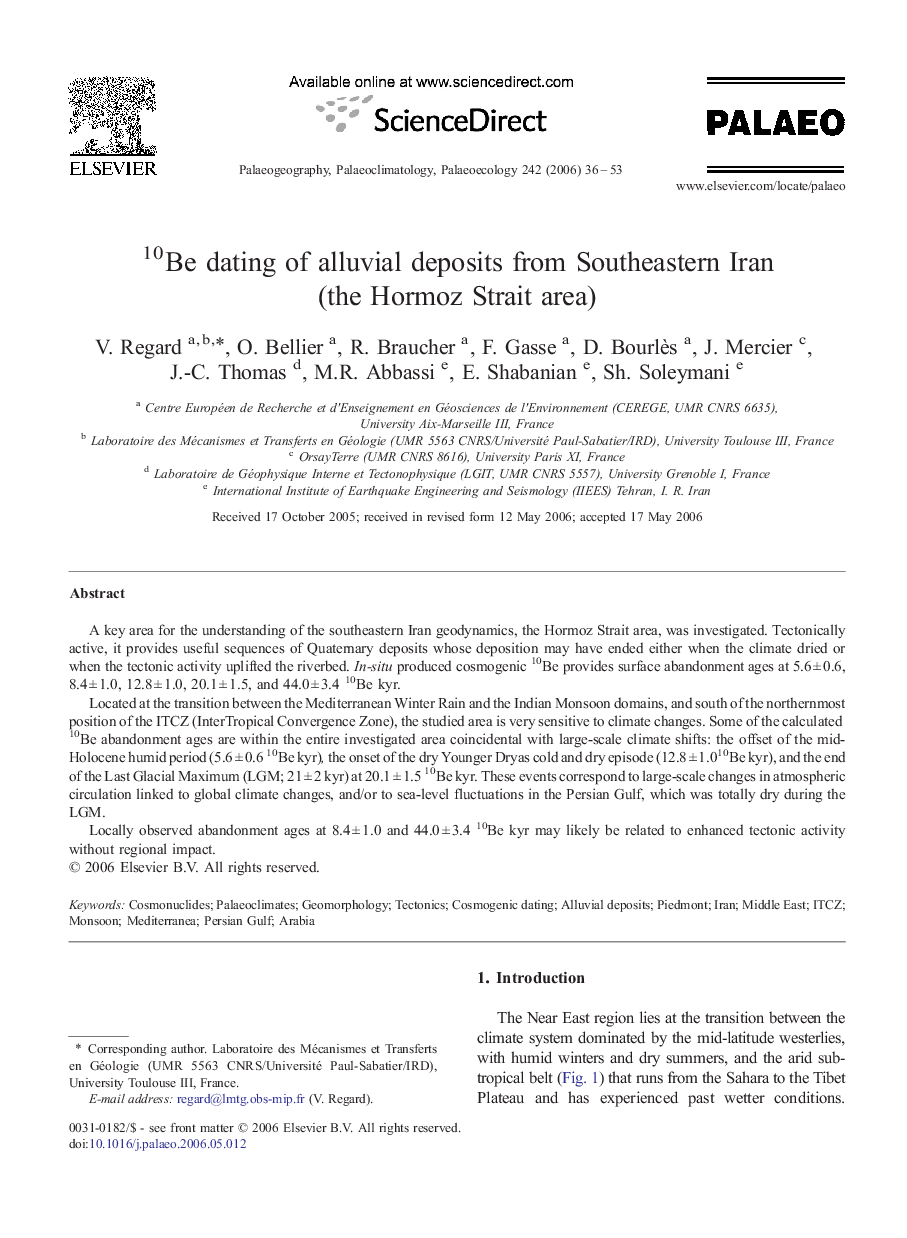| Article ID | Journal | Published Year | Pages | File Type |
|---|---|---|---|---|
| 4469122 | Palaeogeography, Palaeoclimatology, Palaeoecology | 2006 | 18 Pages |
A key area for the understanding of the southeastern Iran geodynamics, the Hormoz Strait area, was investigated. Tectonically active, it provides useful sequences of Quaternary deposits whose deposition may have ended either when the climate dried or when the tectonic activity uplifted the riverbed. In-situ produced cosmogenic 10Be provides surface abandonment ages at 5.6 ± 0.6, 8.4 ± 1.0, 12.8 ± 1.0, 20.1 ± 1.5, and 44.0 ± 3.4 10Be kyr.Located at the transition between the Mediterranean Winter Rain and the Indian Monsoon domains, and south of the northernmost position of the ITCZ (InterTropical Convergence Zone), the studied area is very sensitive to climate changes. Some of the calculated 10Be abandonment ages are within the entire investigated area coincidental with large-scale climate shifts: the offset of the mid-Holocene humid period (5.6 ± 0.6 10Be kyr), the onset of the dry Younger Dryas cold and dry episode (12.8 ± 1.010Be kyr), and the end of the Last Glacial Maximum (LGM; 21 ± 2 kyr) at 20.1 ± 1.5 10Be kyr. These events correspond to large-scale changes in atmospheric circulation linked to global climate changes, and/or to sea-level fluctuations in the Persian Gulf, which was totally dry during the LGM.Locally observed abandonment ages at 8.4 ± 1.0 and 44.0 ± 3.4 10Be kyr may likely be related to enhanced tectonic activity without regional impact.
